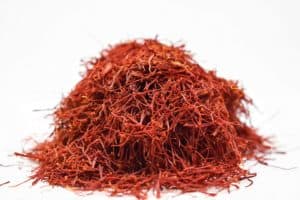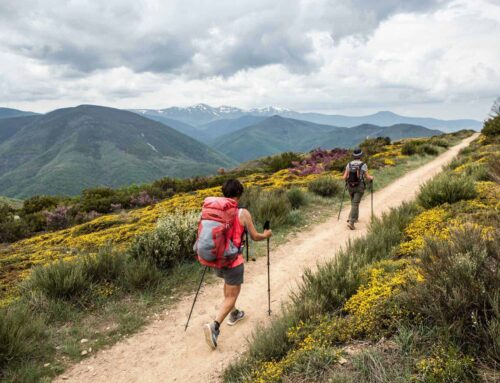Seafood Paella is probably the one dish most associated with Spain. It is also the most contentious dish to come from this beautiful country. The question – “What is a proper Paella?” – could be debated for hours over Spanish wine and tapas!
The Paella Pan
The word Paella is actually the word for the pan in which the rice dished is cooked. If you do not prepare your Paella in the appropriate pan, many Spaniards will argue it is not a real Paella. The dish is a wide, shallow traditional pan used to cook over an open fire. Paella actually translates to “frying pan” in Valencian – the dialect from Valencia.
History
This rice dish is originally from Valencia which is an autonomous region in southeast Spain. It sits on the Mediterranean coast and the capital is also called Valencia. It is the third largest city in Spain following Barcelona and Madrid.
The recipe of Valencian Paella, or Arroz a la Valenciana, was first noted in an 18th century manuscript. Even at this time, there were already guidelines on how to best prepare the dish.
Paella was discovered due to the need for an easy dish with local products that could be easily transported to the hardworking farmers and shepherds. The rice used for the Valencian Paella is called Senia Albufera rice. It is grown in the province of Valencia in large rice fields.

What is in an authentic Paella?
In its origin, the ingredients of the Paella were birds (normally chicken and duck), green beans, lima beams, rice, saffron, rosemary and olive oil. These items were all mixed with water and cooked over low heat. The fire was made with wood from the orange branch. This gave the dish a distinct smell and flavor.
Eventually, the rest of Spain would begin making and eating Paella. In the absence of the original ingredients in other regions, each area would find its own unique way to prepare their Paella.
You still see this diversity in the dish today. Even in Spanish families, the rice dish can be prepared very differently – from the ingredients to the technique in which it is prepared.
Some prefer a more runny rice dish that allows you to dunk your bread in the sauce. Where as others, prefer a dry rice that sticks together as it cools. Your preference is something you will have to learn and discover for yourself!
Many families make a traditional Paella once a week. In Catalonia, you will find they make their Paella on a Thursday. They do this because in the past, the servants day off was on a Thursday.
The wealthy families would have the products prepared for them the day before so it was simple for them to cook by themselves. This would allow them to have a delicious and hearty meal when their workers had the day off.
Saffron
Saffron is considered a critical ingredient of a Paella. This spice is very expensive for a small portion. This is because such a small part of the flower is actually used to produce the spice. Because of this, it takes 75,000 saffron flowers to make one pound of saffron spice!

Seafood Paella
You can get creative with what ingredients you want in your own Paella. You may prefer a vegetarian or vegan version with fresh veggies, keep to the traditional Valencian meat choice of chicken and duck, or enjoy it with fresh seafood.
Anyone from Valencia would tell you a Seafood Paella is not an actual Paella as it is not prepared with the traditional meats. But, we are in Galicia which is a center for fresh seafood from the Atlantic. Thus, a Seafood Paella is by far the most popular Paella in Galicia and on the Camino de Santiago.
We are sharing our authentic Seafood Paella recipe from our Camino guide, Alex.
Ingredients:
- 3 garlic bulbs
- 1 small red pepper & 1 small green pepper
- 1 white onion
- 2 tomatoes
- Fish Broth – Fumet if can you find it as it is a thicker broth (if you want to make it vegan, just use a vegetable broth instead)
- Valencia Rice or any round rice
- A good quality Olive Oil
- White wine
- 2 tsp. Saffron
- 1 tsp. Sweet Paprika
- 2 Tbs tomate paste
Seafood (You can buy these fresh or frozen. Feel free to get creative with your selection, but we use the following):
- Squid
- Shrimp with the tails (Spaniards leave the head on as well and often enjoy sucking the juice out of the head when they are cooked…..to each its own!)
- Mussels
- Clams
- And of course, your traditional Paella pan. If you don’t have one, any shallow, wide sauté pan with a cover will do. You can purchase a proper Paella pan at this online shop – La Tienda.
Method:
- Mince your garlic bulbs, and finely chop your peppers, tomatoes and white onion. First, sauté your onion in your paella pan with a generous portion of olive oil. Cook until the onions are almost transparent. Then, add your peppers, garlic and tomatoes. Cook until tender. Add salt and tomato paste at this time. Add in the Saffron/Paprika and mix well.
- While your vegetables are cooking, cook the squid. (You may want to leave some whole to the side for the top of the Paella.) Pat the squid dry and add to another sauté pan with a small amount of hot olive oil. Cook for 1 to 2 minutes over medium-high heat. The squid will release some liquid. Add some white wine, if you prefer. Cook briefly to warm though. Do not overcook or the squid will turn rubbery.
- Once cooked, remove from the heat. Add the squid liquid to the Paella pan. When the squid is cooled down, chop into small pieces.
- Add the fish broth into your Paella pan to the point where it covers the cooked vegetables, and goes slightly over. Don’t fill to the top as you will have to add a portion of rice. Turn the heat up to high and get the broth to a boil.
- Now here is the tricky part as you will have to learn how your pan, your stove and your quantities all work together to cook the rice. Add the rice in a cross shape into the pan. You will know how much rice your liquid requires, when both cross lines meet the liquid line. You may find you have to try this dish out a few times to really nail the correct method.
- Once you have the level correct, gently mix the broth with the rice and vegetable mix.
- Bring the broth and rice back to a boil, reduce the heat to a simmer. Cover and cook for about 15 minutes. Please bear in mind, this time may be different for different stove tops and depending on your pan thickness.
- After the rice has cooked, add in the shrimp, mussels, clams and squid to the top of the rice. You can push the clams slightly into the rice. Do check at this point, if you think the rice requires more liquid.
- Cover the Paella pan and allow the seafood to steam for 3-4 minutes. This time may vary due to the size of your seafood. Make sure the shrimps are pink and the clams and mussels have opened up. We suggest you do not eat clams or mussels if they have not opened up their shell.
- Turn off the heat under the Paella pan, leave covered, and allow the rice dish to continue to cook with the seafood for another 3 minutes.
- Once your Paella is cooked, enjoy with your friends and family. Do not forget your Spanish wine – an Albarino or Godello is recommended for a Seafood Paella! Or if you are within your bubble, try the tradition of eating the Paella directly from the pan using a wooden spoon.







Leave A Comment